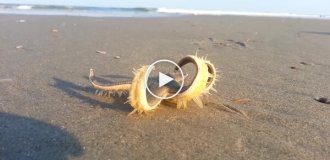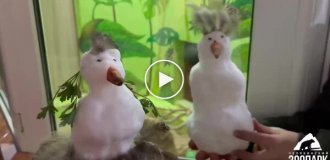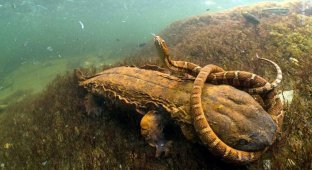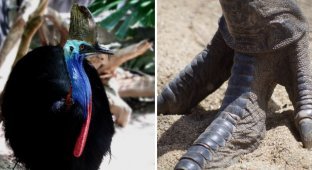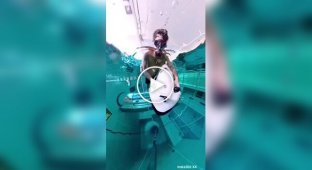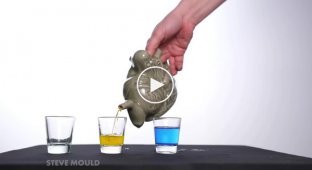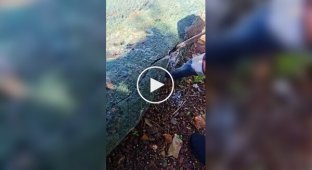The Great Siren: the Third Largest Amphibian in the World (8 photos) photo)
Conservative fish remained fish, innovative fish crawled towards progress and got out on land. But it seems that the animal constructor did not have enough parts for everyone. The big siren is definitely not a fish, but it clearly does not have enough parts to become a full-fledged amphibian! 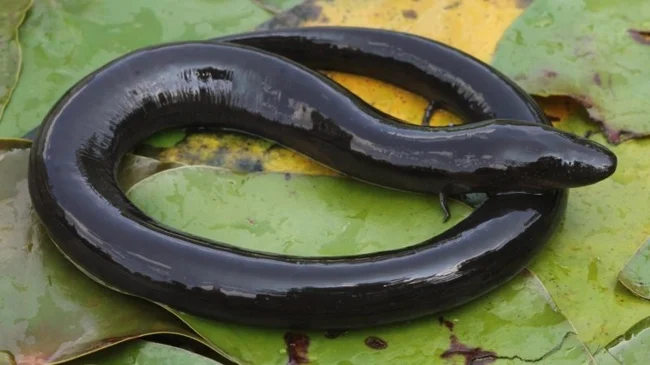
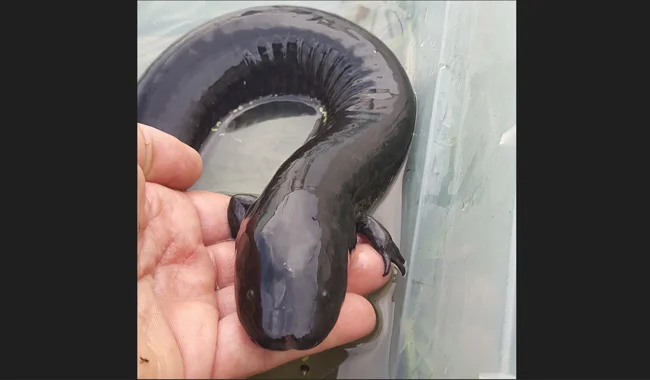
Looks to the future with optimism.
So, the big siren consists of the following parts:
— Salamander body — 1 pc;
— Long newt tail — 1 pc;
— Axolotl head (beady eyes and 3 pairs of gills included) — 1 pc;
— Tiny, underdeveloped paws — 2 pcs (50% of the set);
— Lungs — 2 pcs (too small);
— Fish heart, two-chambered — 1 pc;
— Lateral line, fish sensory organ — 1 pair. 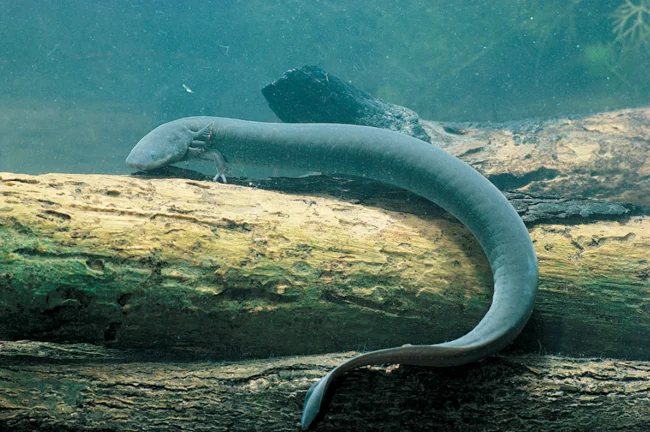
He's sad about the lack of hind legs...
With such a set, it's not worth dreaming about a normal exit to land, so the siren almost never gets out. He sank to the very bottom of the ditches, swamps and lakes of three US states: Florida, Georgia and Alabama. In shallow waters warmed by the southern sun, even an understaffed siren has no problem finding food. Growing up to a meter in length is a common thing for him. And this, by the way, is the third place on the list of the largest amphibians in the world. An achievement, even if you walk on all fours! 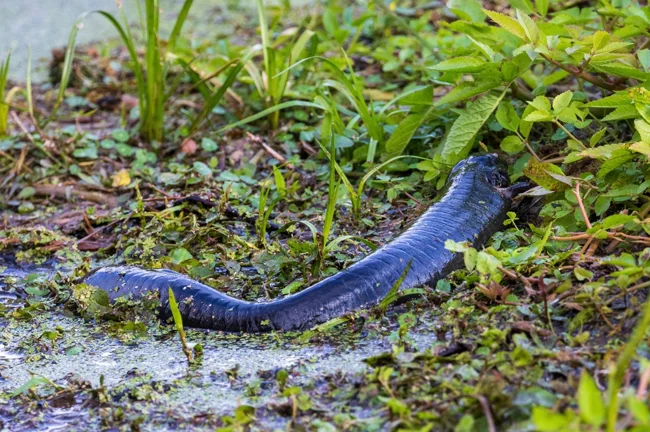
Nothing unusual, our hero just crawls out onto the shore to move to another body of water!
True, to grow to such a size, you need to spin with all your might. Since the sirens were also deprived of normal vision, they rely on their sense of smell and lateral lines - special organs that allow them to subtly feel the movement of water around them. In muddy water, at night, the amphibian becomes a dangerous predator despite the lack of legs. At least dangerous by the standards of small crustaceans, snails and sleepy fry. 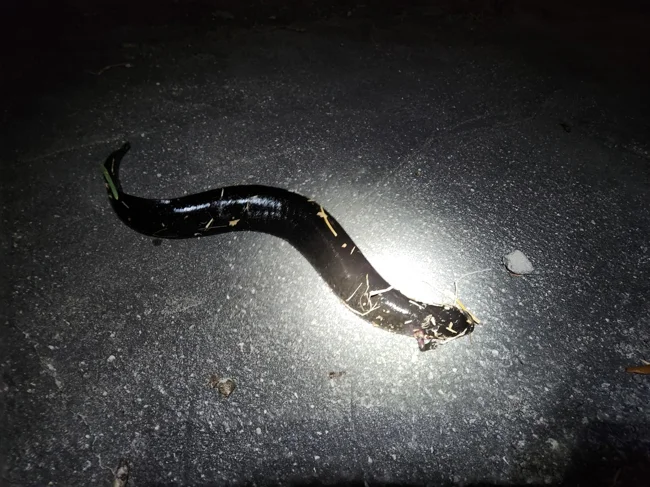
It must be creepy to see something like this at night in the forest. A meter-long black sausage with small arms crawls along the litter.
And if there is little meat food around, the siren switches to algae and young aquatic vegetation. This is extremely unusual: out of 8,500 species of amphibians, less than 10 feed on plants. 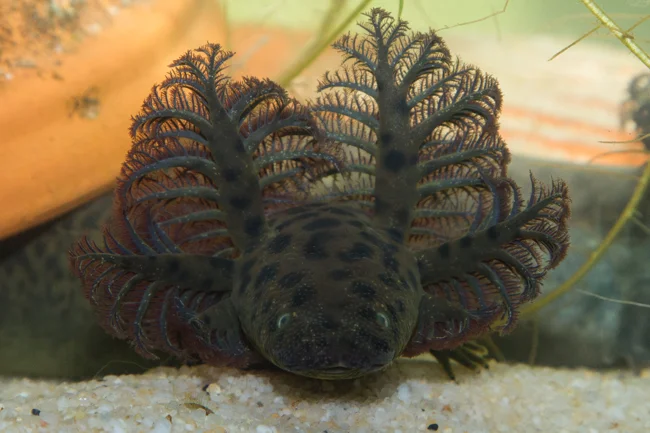
The size of the siren's gills depends on their age and the oxygen saturation of the body of water in which they live. The easier it is to breathe, the smaller the gills.
During the day, the siren turns from a dangerous predator into a short-sighted snack for small alligators and snakes. It is time for it to tactically run into the dense interweaving of aquatic plants, which makes it quite hard to reach prey. It's a pity that it won't be able to wait out the drought in the bushes. But the siren can cope with it. When the water level drops, the amphibian resorts to a brilliant tactic - self-digging in the mud. Having quickly constructed a cocoon from mucus and dead skin, the siren can hibernate until the life-giving moisture returns. And the animal can lie in the mud for up to 3 years! 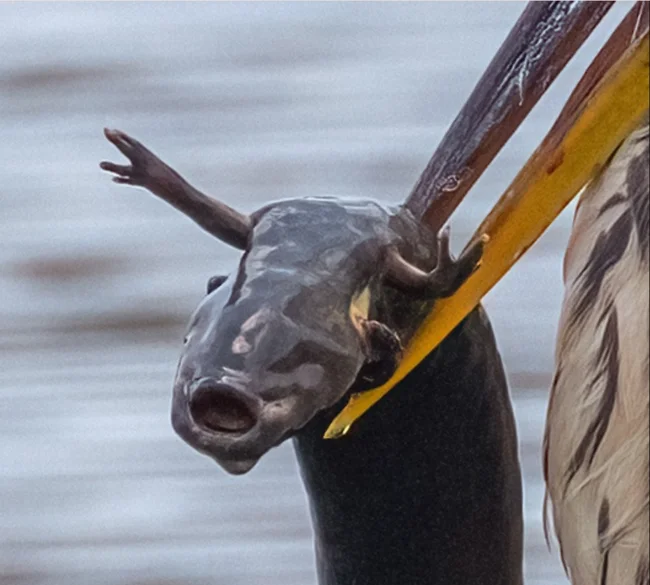
Oh no, I've fallen into the beak of fate, my whole life is hanging by a thread! And I haven't done so much yet!
The desire to hide and seek and camouflage, of course, saves the lives of underdeveloped amphibians, but it also prevents scientists from studying the most piquant features of their lives. It is assumed that their fertilization is external, and the males must seek the attention of the females. After the eggs are fertilized, the males take on all the responsibilities for their protection. Yazhebati become an impenetrable bastion on the path of danger. So impenetrable that they drive away even their own mother from the babies! 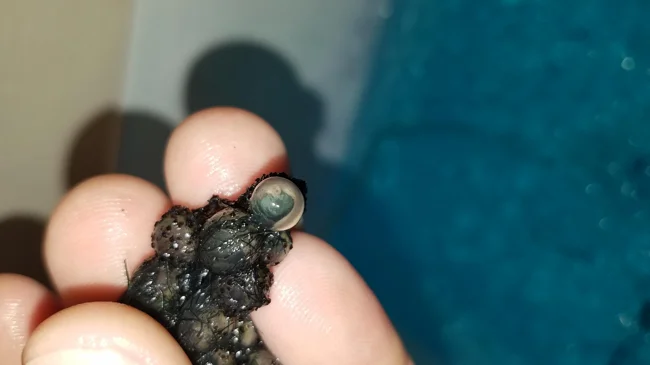
Sirens can be bred in captivity, but this will require a large aquarium with the right water characteristics and an abundance of aquatic vegetation.
A few weeks later, smaller copies of the parents hatch from the eggs, immediately ready to conquer reservoirs on par with the older generation. After all, the large siren is a neotenic amphibian. They remain larval for their entire lives and even reproduce in the larval stage. Just like axolotls!


